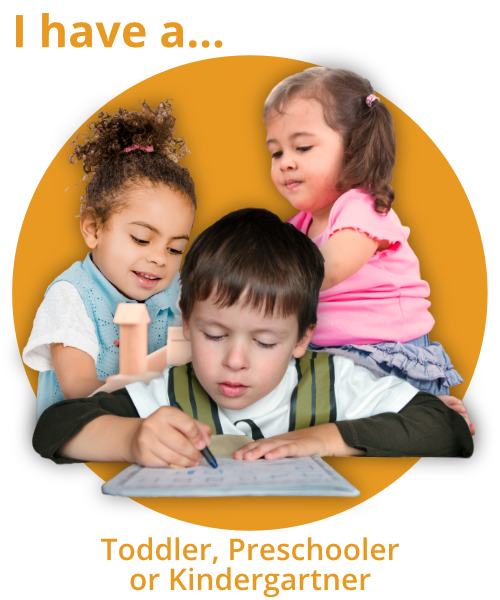The Heart of Montessori is Actually Pretty Easily Found in Homeschooling
What do you think of when you hear the word “Montessori”? Is it a private school? A classroom full of shelves and children choosing activities independently? You would be on the right track, but this isn’t the end of the story.
A certified Montessori teacher works hard to create a prepared environment for children at school, but when we parents use Montessori at home, some of the guiding principles can be even easier to implement.
I’ve considered myself a Montessori homeschooler almost as long as I’ve been a parent, and I also have a background as a classroom guide. Recently I’ve been thinking a lot about the differences between these two phases of my life.
Here are a few of the benefits I’ve noticed as I’ve walked along the Montessori homeschooling journey over the past 12 years.
We Don’t Get In Our Children’s Way As Often As You’d Think
As a Montessori guide in the classroom, your only job is to give lessons, facilitate where needed, prepare the environment, observe the children, and get out of the way. No one is calling you on the phone to chat; you’re not focused on scheduling a pediatrician’s appointment for your students; you’re not busy trying to make sure that there is fuel in the car. You are focused on the children.
These classrooms often even have a higher child:adult ratio to allow the adult to fade into the background as the children work independently. The guide also intentionally becomes a smaller directional force to allow the children to shine.
As a homeschooling parent, you are likely already a pretty busy person! If you thought your whole job was going to be attending to your children 24/7, think again. Don’t be afraid to make yourself unavailable to help sometimes. This allows your child to take initiative.
Dive in and do the cleaning you’ve been meaning to do! Study for that online course you’re taking. Call your mom. Make notes of your plans for the week. While you’re busy decluttering, the children can be busy engaged in their own learning--as long as you’ve taken the time to prepare a sound environment for them.
We Let Our Children Explore…and Explore…and Explore…
One of the gifts of homeschooling is being able to give my children lots of time for uninterrupted exploration. There’s simply more time to work and play without needing to transition or head to the next thing. This is something that even Montessori schools cannot provide in the same way that a home environment can...the school can provide a work cycle but in the end, there are big transitions before and after.
Not so at home. You can be super flexible with your time and routine.
For example, it’s okay to spend two hours making pancakes together in the kitchen. It’s okay (and ideal!) to spend the whole midday at the park with peers.
In every other environment where I have been an educator, there has been that pressure to keep a tight schedule and make things happen--even in a Montessori school with a preserved three hour work cycle. At home, you’re beholden to no pressure but your own.
We Collaborate with Our Children
The best prepared environments involve the children’s personalities, opinions, and preferences. There’s no teacher prep time without children unless it’s during nap or late at night (and who wants to spend that relaxing free time rushing a shelf job?). Therefore, most homeschooling parents end up rotating materials and planning while their children are hanging out in the same room.
Homeschooling parents also often look to cost-cutting measures such as DIY-ing materials or just making do with what is available at home. Sometimes we buy them, too…it can be really special to collaborate on them with your children. In the classroom, usually the guide spends their time after the children have gone home pulling together something new and exciting.
As homeschoolers, we can do all of this with our children! It’s so lovely for them to get to have input and help choose what is going out on their shelves. It might not be as beautiful as it would have been had you designed it yourself, but this sort of decision making is part of the learning process!
We Tend to be Very Flexible
At school, the classroom pedagogy must be guarded and led with intention so that it can be practiced to the best possible outcomes. The experience is curated. At home, you don’t have the same level of responsibility, and nor do you need to have the same set intentions!
You can incorporate a little bit of Waldorf or Reggio if you like. You can experiment with more and less regimented schedules. You can dash in a little bit of unschooling.
There isn’t just ONE WAY to run your homeschool!
Every homeschooler I know makes the most of this type of flexibility. They may shift wildly on the spectrum from workbooks and structured studies all the way to forest co-ops and unschooling. You become acutely aware of what your child is learning at every moment--in the way a classroom guide simply cannot be.
You know your child best, and this means you can incorporate things into your life that suit them without question, without concern for serving a whole classroom of children. You own your experience and you are in charge of your environment.
We Have Lots of Time for Pretend Play
Do not undervalue pretend play. It is so, so important! Here’s the thing: Montessori guides do appreciate and see the value in pretend play. Yet, when we look in a Montessori classroom, we see children largely engaged in one-person, concentrated work. This is one important part of childhood...but it isn’t the whole childhood.
In many Montessori schools, there is time for pretend play; you might see it between two children working adjacent to one another, or out on the playground as the children have recess.
What a school DOESN’T offer is the ability to roll into freeform pretend play at will--the type that can last hours, or even days. We know that children learn best when free to immerse themselves in different types of play for long periods of time. Maria Montessori noticed this, too! It’s why she put so much emphasis on repetition.
It All Feels So Natural
As Homeschoolers, we can allow education to happen in a much more natural way! Our children can wake up and go right to the work that is in their heart and soul that very moment.
Some days the urge might be table scrubbing! Other days, a child might spend the whole morning preparing food to taste and touch and eat. If they want to take out every single plush animal and live life with them, exploring socialization, and language development, that’s what happens.
Is Montessori Homeschooling for You?
Only you can answer this question. It is 100% for me, and I am so excited you found yourself here reading these little tips. Take some time to mull all of this over. If you have any questions, reach out!


